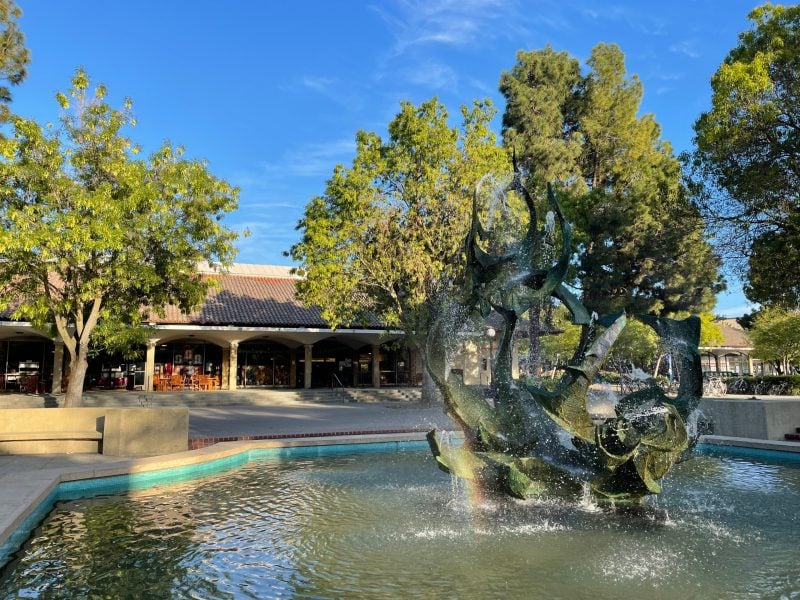This series from the community features members of the SAPAAC Asian American Studies Coalition from different generations sharing their first-hand experiences as Asian Americans on campus. Visit www.sapaac.org (Stanford Asian Pacific American Alumni Club) to find out more about the coalition’s efforts to advocate for Asian American Studies at Stanford. Read previous entries here and here.
Hope Nakamura ’83 is a public interest lawyer at the Legal Aid Society of San Mateo County and a past SAPAAC board member and president. While on campus, she co-chaired the Asian American Students’ Association (AASA), served as the Asian American intern at DOSA, and participated in the Asian American Theater Project’s 1979 production of “FOB.”
I entered Stanford in 1978. At the time, about six to seven percent of the undergraduate students identified as Asian Americans. One of my reasons for choosing Stanford over other colleges was the presence of an Asian American theme dorm. Growing up in Los Angeles, I went to a high school that was racially diverse thanks to busing, though I didn’t live in a predominantly Asian community.
Except for learning about the mass incarceration of Japanese Americans by our own U.S. government during WWII, I didn’t know much about Asian Americans. As I continued my academic journey by attending Stanford, I hoped to explore my identity as a third-generation Japanese American, and how it fit into my vague notion of building a better world.
Once I arrived on the Farm, though, I was disappointed to find there were no courses that examined the history of Asian immigrants in the U.S. Instead, I had to explore Asian American history outside the classroom, through Junipero (the Asian American theme dorm before it was renamed Okada House), the Asian American Student Association (AASA), and other Asian American student organization activities. I spent most of my extracurricular time at the Asian American Activities Center (A3C) organizing student events, or working on AA issues off-campus, both in the Asian American community and on other university campuses. We supported efforts to oppose the displacement of Chinatown residents and destructive commercial redevelopment of Japantown.
During my time at Stanford, Black/African American, Chicano/Latinx, Native American, and Asian American students worked together to draw attention to disparities we experienced on campus and in our communities off-campus. Organizations of students of color were constantly urging Stanford to live up to its stated commitment to diversity by providing resources to support minority students, who were often marginalized. Although there was a Dean of Student Affairs for Black students, the other communities of color had no full-time staff — only student interns — to provide a voice for their community in the Office of Student Affairs. The University made no effort to develop any Asian American Studies courses. The one AA class available to me and other students was one that students themselves organized and taught through the Stanford Workshops on Political and Social Issues (SWOPSI). This continued to be the case for many years.
After graduating, I worked with others in the Stanford Asian Pacific American Alumni Club (SAPAAC) to support the growing student demand for Asian American Studies, which resulted in the establishment of the Comparative Studies in Race & Ethnicity (CSRE) program. But since that high point, we have seen the AAS program at Stanford surpassed by AAS departments at other colleges and universities in California and across the country. This disparity is not from lack of faculty talent, but rather an apparent lack of conviction on the part of the administration. For over four decades, Stanford has never clearly signaled that ethnic studies is a vital academic pursuit worthy of institutional support. Consequently, our AAS program has been unable to attract and retain more than a handful of leading Asian Pacific American scholars.
Why is it important to offer a more robust program? I am a lawyer working in the field of poverty law. Understanding the history of discrimination and racist policies aimed at different racial and ethnic minority communities over decades is critical to determining how policies and laws need to change if we are to address the growing disparities between the rich and poor in our country. However, there is little research that disaggregates the diverse Asian/Pacific Islander data being collected by state and federal agencies, which might help government and nonprofits better target anti-poverty policy and services. We also continue to see the role race plays in keeping communities divided. Even Asian/Pacific Islander professionals, who have economic advantages, have come to realize that racism and discrimination affect their lives, whether it is the “bamboo ceiling” that they experience when trying to get promoted, or the anti-Asian violence that has escalated since the start of the COVID-19 pandemic.
With the recent Black Lives Matter reckoning, we are, perhaps, finally recognizing that racism remains a deep-seated problem that continues to feed inequality and division. Understanding this history and connecting it to contemporary concerns is the pathway to change. As Provost Persis Drell recently acknowledged, Stanford has a role to play in increasing research and teaching about race on the path to overcoming racism and inequality in our world. This includes addressing the racism and inequality affecting Asian Americans and other communities of color in the United States.
If the University actually believes that addressing race and inequality is a priority, it’s time to back up good intentions with real action. Stanford must seize this opportunity to make meaningful progress by allocating enough University resources to provide Asian American Studies and other ethnic studies programs at Stanford with sufficient numbers of tenured faculty to build leading centers of research and study. Alumni are willing to support this effort, but the University itself must step up now. We’ve been waiting long enough.
